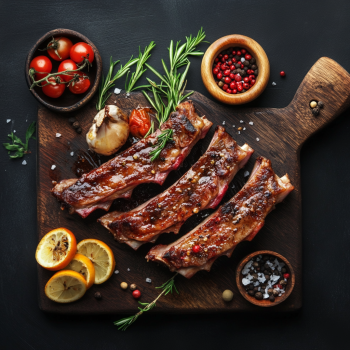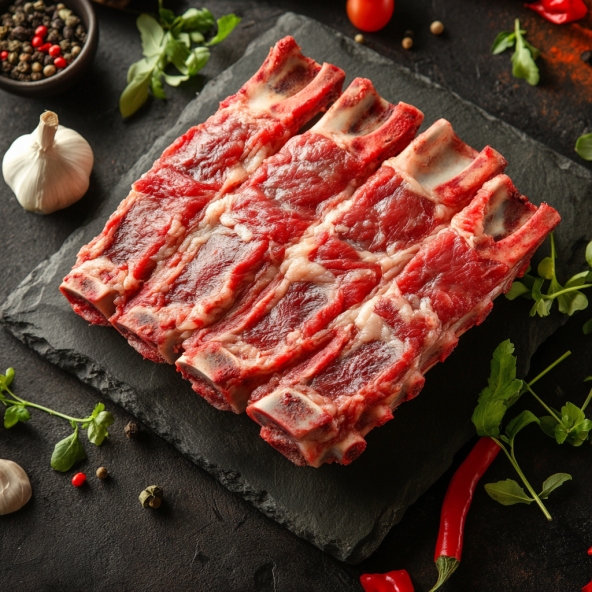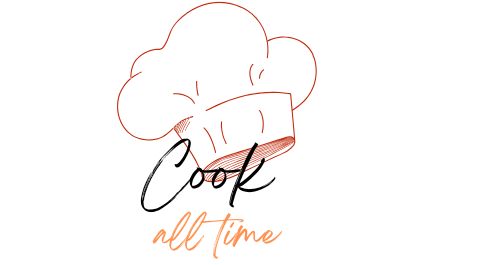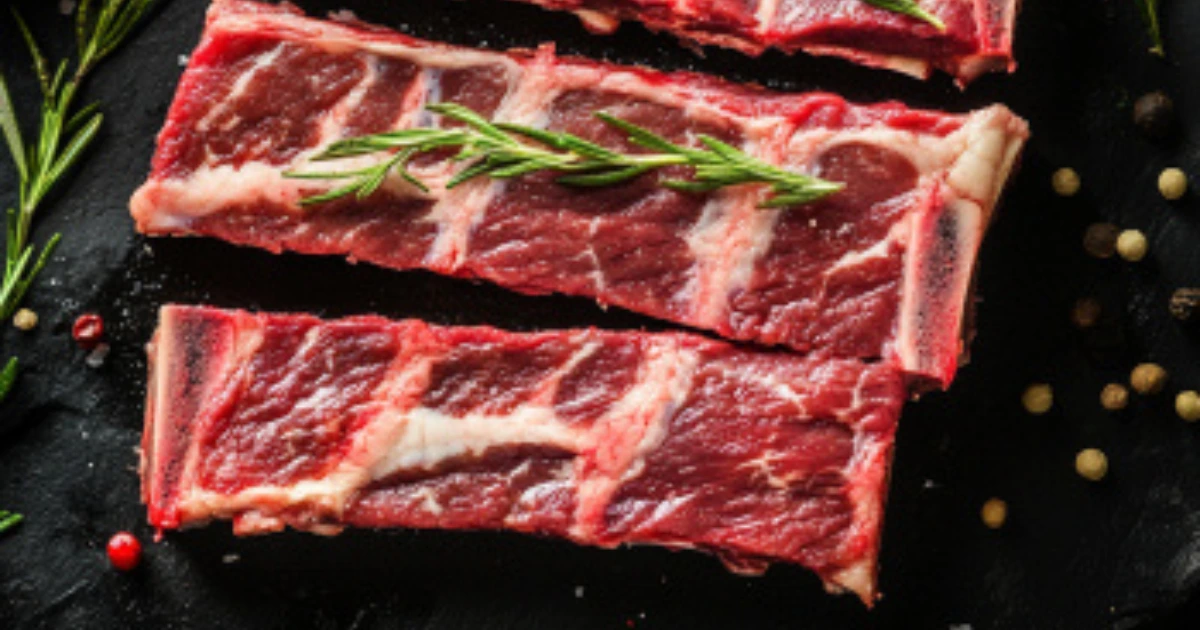Introduction
Are Beef Back Ribs the Same as Beef Ribs ? When exploring the world of beef ribs, it’s important to understand the various cuts available. Rib cuts come in different types, each offering distinct textures, flavors, and cooking methods. As you consider making your next meal with this delicious cut, it’s essential to know what sets each variety apart.
Understanding these differences will help you decide the best cut for your recipe and cooking style. In this article, we’ll compare beef back ribs with other popular cow rib cuts to help you make an informed choice.
Table of Contents
What Are Beef Back Ribs?
Beef back ribs are a popular cut taken from the upper portion of the cow’s rib cage. This cut is leaner compared to other Rib cuts, providing a tender texture with a mild flavor profile. Known for being slightly less meaty than other cuts, beef back ribs are still packed with flavor, making them ideal for grilling, roasting, and smoking.
Cut Location
Cow back ribs meat are located on the upper section of the rib cage, just above the ribeye. This position provides the ribs with a more tender texture compared to lower rib cuts. Unlike short ribs, which come from the lower section of the cow, back ribs are leaner and have less meat attached to the bones.
Flavor Profile
Beef back ribs have a mild Rib meat flavor that can be enhanced with marinades, spices, and slow cooking methods. The leaner texture means they absorb flavors more readily, making them a great choice for grilling or smoking with your favorite seasonings. While they are not as fatty as other Rib cuts, they still offer a satisfying, tender bite when cooked properly.
What Are Other Types?
There are several types of Rib cuts, each offering different characteristics and uses. Let’s explore the key differences between cow back Rib meat and other cuts like short ribs and plate Rib meat. Understanding these variations can help you choose the right cut for your cooking preferences.
Short Ribs
Short ribs are known for their rich, beefy flavor and marbling. They come from the lower part of the rib cage and contain a generous amount of fat, which provides incredible tenderness and flavor when slow-cooked. Unlike beef back Rib meat, short Rib bones are thicker and meatier, making them ideal for braising, slow roasting, or grilling at lower temperatures.
Plate Ribs
Plate ribs are another cut taken from the lower part of the rib cage, often near the belly. These ribs are heavily marbled, meaning they have a higher fat content compared to Riblets roast or short Rib meat. This fat contributes to their rich, flavorful taste. Plate ribs are perfect for slow cooking or smoking, as they require longer cook times to break down the connective tissues and fat.
Key Differences
You may be wondering, Are beef back ribs the same as beef ribs? While cow back ribs are a type of cow rib, they differ significantly from other cuts like short Rib roast and plate Ribcage. Let’s break down some of the key differences between these two categories of Rib cuts to help you make an informed choice for your next meal.
Meat-to-Bone Ratio
One of the biggest differences between beef back Rib bones and other Rib cuts is the meat-to-bone ratio. Cow back Rib bones tend to have less meat than other cuts like short Bone cuts or plate Rib meat, which are typically meatier and more substantial. While beef back Bone cuts are still tender and flavorful, they offer less meat per rib compared to their counterparts.
Cooking Techniques
When considering which of the cooking methods is best for back ribs, it’s important to choose the right cooking technique based on the cut you are working with. Riblets Bone cuts are best suited for grilling, roasting, or smoking, where the focus is on slow cooking at a low temperature to enhance tenderness and flavor.

To explore grilling techniques, check out how to make Queen Elizabeth pancakes for a unique twist on outdoor cooking.
In contrast, short ribs and plate ribs are better for slow cooking methods like braising, as the meat requires longer cooking times to break down and become tender.
Choosing the Right Beef Ribs for Your Recipe
When selecting the right ribs for your recipe, there are several factors to keep in mind. Understanding how to match the ribs to the type of dish you are preparing can make a significant difference in the final result.
Intended Dish
Different rib cuts work better for specific cooking styles. For example, if you are planning to grill or smoke your ribs, Bone cuts back Rib meat may be the best option due to their tender texture and ability to absorb marinades and seasonings. On the other hand, if you are preparing a braised dish or stew, short ribs or plate ribs are more suitable due to their higher fat content and meatiness.
Availability and Price
Beef back ribs are typically more affordable than short Ribcage or plate Rib meat. However, depending on your location, availability may vary. It’s important to consider both the price and quality when sourcing your Rib cuts. For a more budget-friendly option, beef back Bone cuts might be your best choice. However, if you want a richer, more intense beef flavor, short Rib bones or plate Bone cuts may be worth the investment.
Cooking Techniques
When it comes to cooking Cow back Bone cuts , the goal is to enhance their natural flavor and texture. Understanding which cooking methods work best for beef back Rib meat ensures that you get the most out of this tender, flavorful cut. With the right technique, you can achieve a perfect balance of smokiness, tenderness, and juiciness. Let’s dive into some of the most popular cooking methods and explore the benefits each offers.
Grilling
Grilling is one of the fastest ways to cook Cow back Bone cuts while adding a smoky flavor. The key to success with grilling is maintaining consistent heat and controlling flare-ups. When grilling, start by seasoning your ribs with a dry rub or marinade, then cook over medium heat to ensure even cooking without burning the exterior.
- Preheat your grill to medium heat.
- Place the ribs bone-side down and cook for 1.5 to 2 hours.
- Flip occasionally to ensure even browning.
- For smoky flavor, use wood chips or a smoker box.
Grilling offers a quick method for those who want beef back Rib bones with a slight char, but it requires attention to heat management.
Smoking
Smoking is one of the best methods for achieving melt-in-your-mouth Cow back Bone cuts. The slow cooking process allows the meat to absorb the smoky flavor and become exceptionally tender. For the best results, use low heat over an extended period, usually 225°F, to ensure that the ribs cook slowly and retain moisture.

- Preheat the smoker to 225°F.
- Place the ribs on the smoker bone-side down.
- Smoke for 4-6 hours, depending on the thickness.
- Add wood chips for added flavor.
Smoking requires patience, but the result is a flavorful, juicy rib that showcases the depth of flavor from slow cooking.
Oven-Baking
Oven-baking is an excellent alternative to grilling and smoking, especially for those who want a hands-off approach. Baking beef back Rib meat in the oven ensures they cook evenly while remaining juicy. It’s also a great option for those without a grill or smoker.
- Preheat your oven to 300°F.
- Place the ribs on a baking sheet and cover with foil.
- Bake for 2.5 to 3 hours until the ribs are tender.
- For a caramelized finish, remove the foil in the last 30 minutes and brush with sauce.
Oven-baking is convenient, allowing you to focus on other meal prep, while still yielding tender and flavorful beef back Rib bones .
Common Mistakes to Avoid When Cooking Ribs
Cooking beef back Rib bones can be tricky if you’re unfamiliar with the process. However, avoiding a few common mistakes can help you achieve the perfect ribs every time. Here are some common mistakes to watch out for and how to avoid them.
Overcooking
One of the most common mistakes when cooking Cow back Rib bones is overcooking them. While cooking ribs for long periods can help break down the fat and connective tissue, it’s important not to dry them out. Overcooked ribs can become tough and chewy rather than tender and juicy.
To avoid overcooking, always use a meat thermometer to check for doneness, aiming for an internal temperature of 190°F to 203°F for maximum tenderness.
Skipping the Resting Phase
After cooking cow back ribs, it’s crucial to let them rest before serving. Skipping this step can cause the juices to escape, leaving the meat dry and less flavorful. Allowing the ribs to rest for at least 10 minutes after cooking will help retain their moisture and ensure a juicier, more flavorful bite
FAQs
When cooking Cow back ribs, many people have questions about the differences between cuts, pricing, and cooking methods. Here are answers to some of the most frequently asked questions.
What’s the Difference Between Back Ribs and Short Ribs?
A common question is, Are beef back ribs the same as cow ribs? While both are types of cow ribs, they differ in several ways. Cow back ribs come from the upper rib cage and are leaner. In contrast, short ribs come from the lower rib cage and are fattier with more meat attached to the bones. Short ribs also have more marbling, giving them a richer flavor and different texture when cooked.
Both types are delicious, but understanding the differences helps you select the best cut for your recipe.
Are Beef Back Ribs Cheaper Than Short Ribs?
Beef back racks are generally less expensive than short Rib bones, as they contain less meat and fat. The price difference may vary based on factors such as location, availability, and the quality of the meat. If you’re on a budget but still want a flavorful rib, beef back Rib bones are a great choice. However, if you’re willing to splurge for a more luxurious, fatty cut, short ribs might be your best bet.
Conclusion
In conclusion, understanding the differences between cow back Rib meat and other beef ribs is crucial when selecting the best cooking method and recipe. Whether you prefer grilling, smoking, or oven-baking, each method brings out unique flavors in the meat. Moreover, avoiding common mistakes, such as overcooking or skipping the resting phase, will ensure your ribs are always tender and juicy. Finally, understanding the differences in pricing and cooking techniques can help you choose the right ribs for your next meal.

